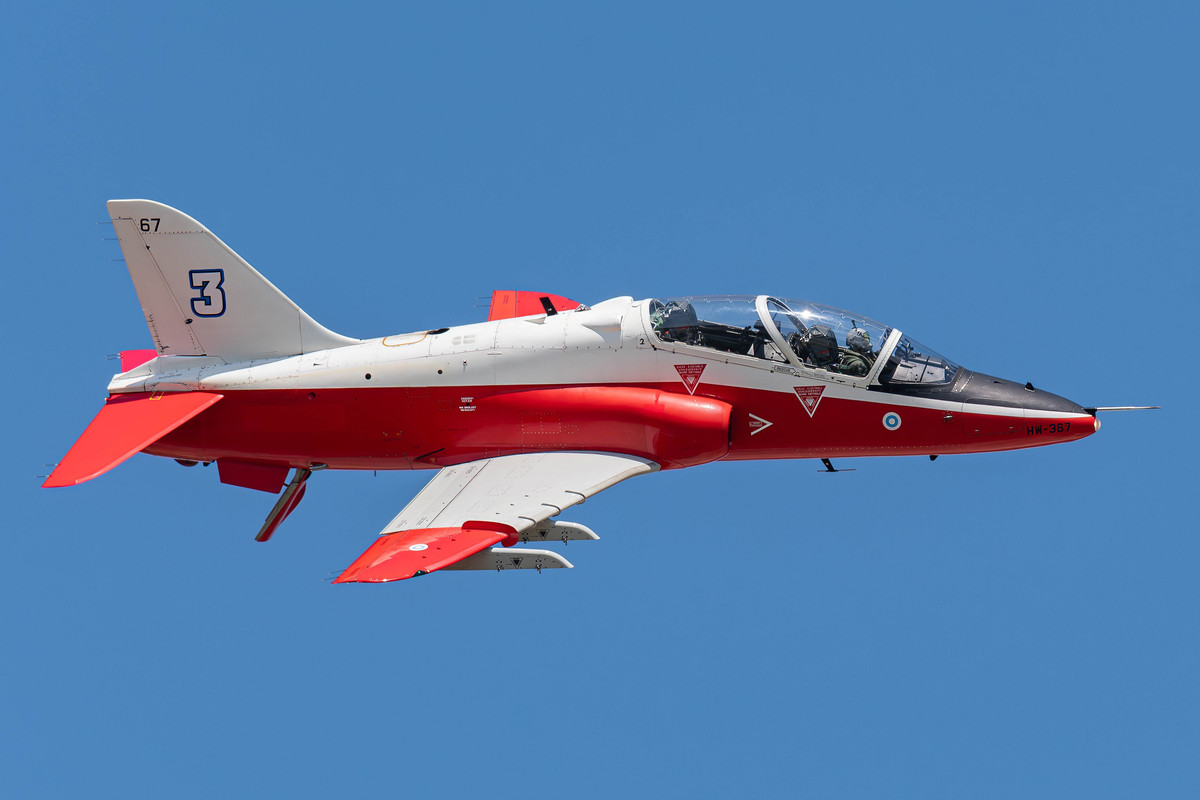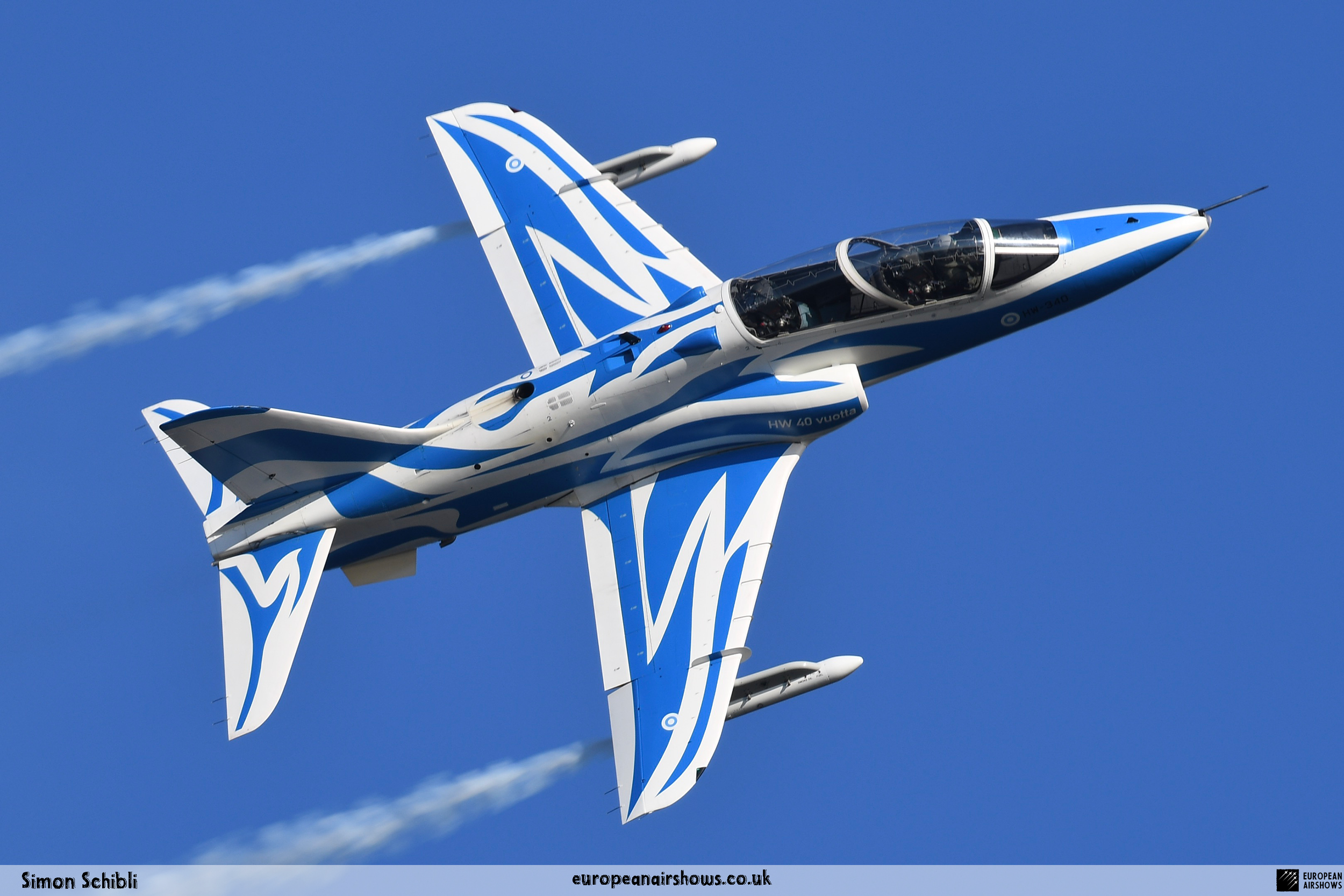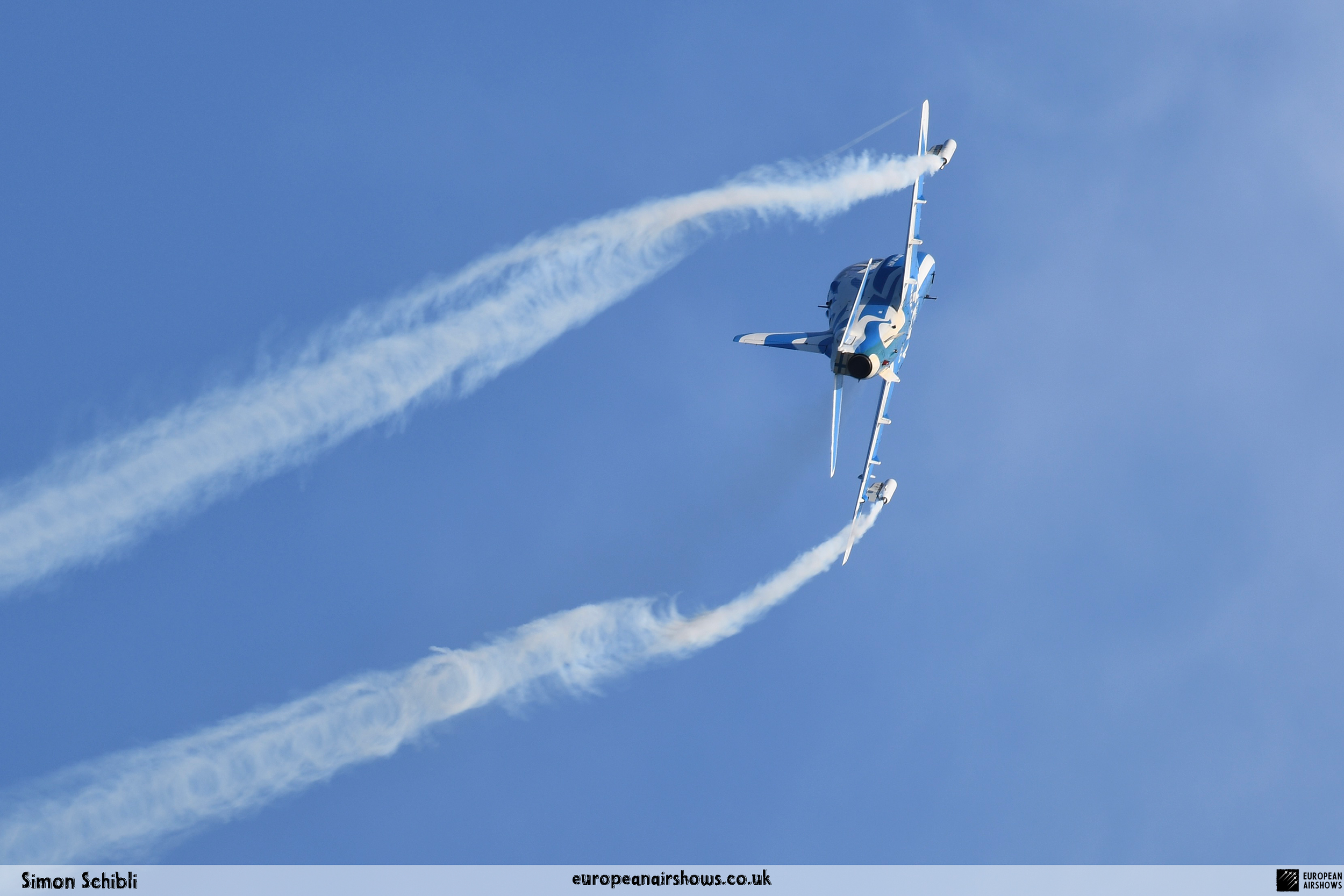
Finnish Air Force Hawk Solo Display
Hawk Solo Display
The Finnish Air Force Hawk Solo Display is a meticulously crafted performance that demonstrates the exceptional capabilities of the BAE Systems Hawk, a British-designed jet trainer in service with the Finnish Air Force since the 1980s. Flown by highly skilled pilots, often from the 41st Fighter Squadron of the Air Force Academy, the display features a sequence of complex maneuvers tailored to exhibit the aircraft’s strengths. The Hawk, known for its swept-wing design and efficient energy retention, allows the pilot to maintain high speeds—typically between 600 and 800 km/h—throughout the routine, even under significant G-forces, offering a visually striking experience for onlookers.
Unlike louder or more aggressive displays, the Hawk Solo stands out for its elegant yet powerful aerial choreography, blending classical aerobatics with modern jet performance. The routine includes tight turns, steep climbs, and rapid aileron rolls, showcasing the aircraft’s agility and responsiveness. Pilots leverage the Hawk’s fast roll rate and precise handling to execute maneuvers like four-point rolls and Derry turns, often enhanced by smoke pods that trace the aircraft’s path through the sky. This combination highlights not only the jet’s technical prowess but also the pilot’s ability to push it to its operational limits.
The display serves as a testament to the Finnish Air Force’s commitment to excellence in pilot training and aircraft performance. Spectators are treated to a dynamic showcase of steep vertical climbs and controlled descents, often pulling between six to eight Gs, which test the physical endurance of the pilot while demonstrating the Hawk’s structural durability. With its roots in the Air Force’s tradition of precision flying, the Hawk Solo Display captures the essence of military aviation skill, offering a polished and professional presentation that resonates with aviation enthusiasts and casual viewers alike.
About the Hawk
The BAE Systems Hawk is a British single-engine, jet-powered advanced trainer aircraft, developed by Hawker Siddeley (later British Aerospace, and now BAE Systems) in the early 1970s. Initially designed as a replacement for the Folland Gnat, the Hawk first flew on August 21, 1974, and entered service with the Royal Air Force (RAF) in 1976 as the Hawk T1. Its primary role was to train pilots for fast jet aircraft, bridging the gap between basic trainers and frontline fighters like the Panavia Tornado and Eurofighter Typhoon. The aircraft’s success stemmed from its versatility, affordability, and exceptional handling, making it a popular choice for air forces worldwide. Over 1,000 Hawks have been produced, with variants sold to countries such as Australia, Canada, India, and South Africa.
The Hawk evolved significantly over the decades, with the Hawk 60 series introducing improved engines and avionics in the 1980s, catering to export markets seeking a light attack capability. By the 1990s, the Hawk 100 series added advanced navigation and weapons systems, enhancing its role as a combat-capable trainer. The most modern iteration, the Hawk T2 (Hawk 128), entered RAF service in 2009, featuring a glass cockpit and simulated weapons training to prepare pilots for fourth- and fifth-generation fighters. Beyond military use, the Hawk gained fame through the RAF Red Arrows aerobatic team, which has flown the aircraft since 1979, showcasing its agility at airshows globally.
Developmentally, the Hawk benefited from Hawker Siddeley’s experience with jet aircraft like the Harrier, blending cost-effectiveness with performance. Its adaptability led to roles beyond training, including limited combat use by some operators. BAE Systems has continued to market the Hawk as a low-cost, reliable platform, with production ongoing into the 21st century for nations seeking an economical yet capable jet. Its longevity reflects a balance of innovation and practicality, securing its place as one of the most successful trainer aircraft in aviation history.
Specifications
Crew
2
Length
12.43 m (40 ft 9 in)
Wingspan
9.94 m (32 ft 7 in)
Height
3.98 m (13 ft 1 in)
Max Speed
Mach 0.84 (1,028 km/h, 639 mph, 555 kn)
Range
2,520 km (1,360 nmi, 1,565 mi)
Service Ceiling
13,565 m (44,500 ft)
Thrust/weight
0.65
Hawk in the Finnish Air Force
The Finnish Air Force adopted the BAE Systems Hawk in 1980, acquiring 50 Hawk Mk 51 aircraft to modernize its pilot training program. These jets replaced older trainers like the Fouga Magister, offering a significant leap in performance with their Rolls-Royce Turbomeca Adour engines and advanced avionics tailored to Finland’s needs. The Hawks were primarily used to train pilots for high-performance aircraft such as the MiG-21 and, later, the F/A-18 Hornet, ensuring Finnish pilots could transition smoothly to frontline fighters. Deliveries began in 1980, and the aircraft quickly became a cornerstone of Finland’s air training doctrine.
In the 1990s, Finland upgraded its fleet with seven additional Hawk Mk 66 aircraft purchased from Switzerland in 2007, enhancing capacity and incorporating more modern systems. The Finnish Hawks have been based at Kauhava and later Rissala, operating under the Air Force Academy. They have also been adapted for light attack roles, equipped with weaponry for ground support training, reflecting Finland’s emphasis on versatile defense capabilities in its strategic northern environment. The aircraft’s reliability in harsh Nordic conditions has been a key asset.
The Hawk remains in active service with the Finnish Air Force as of 2025, supporting both training and tactical exercises. Its role has evolved with simulator integration and updated avionics, keeping pace with modern fighter requirements. The Finnish fleet has also been showcased in exercises with NATO partners, underlining its interoperability and Finland’s commitment to regional security cooperation. The Hawk’s enduring presence highlights its importance to Finland’s military aviation heritage.
Did You Know?
- The Hawk’s original design included a unique feature: its wings were deliberately designed with a slight anhedral angle (downward slope) to improve roll stability, a trait not commonly seen in trainer aircraft of its era.
- During its development, the Hawk was briefly considered for a carrier-based variant for the Royal Navy, but the idea was scrapped due to cost and complexity—yet some design studies still exist in archives.
- The Hawk’s airframe is so robust that it can withstand a bird strike at speeds up to 463 knots (858 km/h), a testament to its engineering for safety and durability.
- A little-known export success: the Hawk was the first British jet aircraft to be assembled under license in India, with Hindustan Aeronautics Limited producing over 100 units since the 1980s.
- The Hawk T2’s glass cockpit was designed with input from Formula 1 engineers, integrating ergonomic principles to reduce pilot workload, a rare crossover of motorsport tech into aviation.
Test Your Knowledge
1. What was the Hawk’s original project designation before it was named?




















